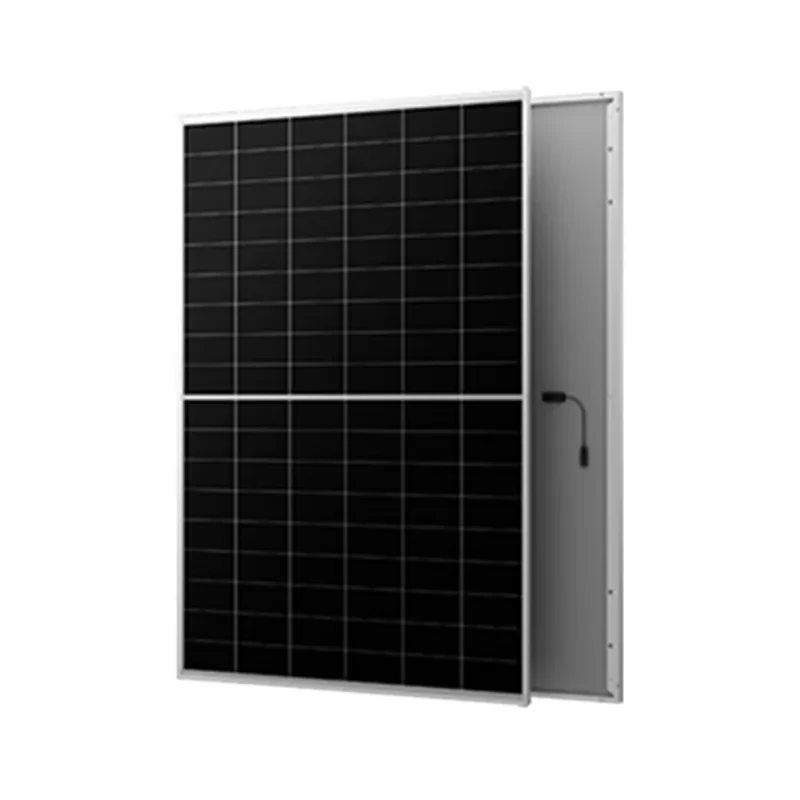Exploring the Advantages of Bifacial Photovoltaic Technology in Solar Energy Generation
The Dual Benefits of Bifacial Photovoltaic Technology
In the pursuit of sustainable energy solutions, photovoltaic (PV) technology has emerged as a cornerstone for harnessing solar power. Among the latest advancements in this field is bifacial photovoltaic technology, which offers a promising approach to maximize energy capture and efficiency. This article explores the concept of bifacial PV, its benefits, and its implications for the future of solar energy.
Understanding Bifacial PV Technology
Bifacial photovoltaic panels are unique in that they have solar cells on both sides of the panel, allowing them to capture sunlight from both the front and the rear. Traditional photovoltaic panels are designed to absorb sunlight directly from one side, resulting in a limitation in potential energy generation. In contrast, bifacial panels can harness albedo effects—reflected sunlight from the ground and surrounding surfaces—effectively increasing their energy output.
Increased Energy Production
One of the most significant advantages of bifacial PV technology is its ability to produce more energy compared to traditional monofacial panels. Studies indicate that bifacial panels can yield up to 30% more energy under optimal conditions. This increased output can be particularly advantageous in regions with high albedo surfaces (such as snow or sand) that reflect additional sunlight onto the rear side of the panels.
By capturing more sunlight, bifacial PV systems contribute to enhancing the efficiency of solar energy projects. This means that, for the same amount of surface area, energy developers can produce significantly more electricity, optimizing land use and reducing both capital and operational costs.
Enhanced Durability and Longevity
Bifacial PV panels are generally built with higher durability in mind. The materials used in their production, including glass on both sides, offer increased protection against environmental stressors such as hail, wind, and water. This construction can lead to a longer operational lifespan, potentially exceeding 30 years—significantly longer than some traditional panels.
The improved durability not only ensures a better return on investment over time but also reduces replacement and maintenance costs. As solar technologies continue to evolve, the longevity of components becomes crucial in the drive towards cost-effective renewable energy solutions.
bi facial pv

Versatility in Deployment
Another noteworthy benefit of bifacial PV technology is its versatility. These panels can be deployed in various configurations and environments, including on rooftops, solar farms, and building-integrated photovoltaics (BIPV). Their ability to capture sunlight from both sides allows for more creative and efficient installations, where space may be limited.
Bifacial panels are also an ideal choice for ground-mounted solar farms. By positioning them at elevated angles or in tracking systems that follow the sun's path, developers can maximize their exposure to sunlight from multiple angles. These deployment strategies further enhance the potential energy production.
Economic and Environmental Impact
The adoption of bifacial PV technology not only has implications for energy production but also contributes positively to economic and environmental outcomes. As the demand for clean energy solutions grows, the increased efficiency of bifacial panels can facilitate a larger share of renewable energy in the grid, supporting global efforts to combat climate change.
Moreover, the lower levelized cost of electricity (LCOE) associated with bifacial systems can drive solar adoption among utilities and consumers alike. The financial savings in energy production can ultimately lead to lower electricity prices for end-users, further promoting the shift towards sustainable energy sources.
The Future of Bifacial PV
As technology continues to advance, bifacial photovoltaics are poised to play a critical role in the renewable energy landscape. Research and development are ongoing to improve the materials, designs, and efficiency of bifacial panels, paving the way for more widespread adoption.
In conclusion, bifacial photovoltaic technology represents a significant evolution in solar energy harvesting. Its ability to capture sunlight from both sides, coupled with increased energy production, durability, and versatility, makes it an attractive option for a variety of applications. As the world seeks sustainable energy solutions to address climate change, bifacial PV stands as a beacon of innovation, promising not only to meet our energy needs but also to protect the environment for future generations.
-
String Solar Inverter: The High-Efficiency Solution for Smart Solar EnergyNewsJul.14,2025
-
Revolutionizing Rooftop Energy with the Power of the Micro Solar InverterNewsJul.14,2025
-
Power Independence with Smart Off Grid Solar Inverter SolutionsNewsJul.14,2025
-
On Grid Solar Inverter: Powering the Future with Smart Grid IntegrationNewsJul.14,2025
-
Monocrystalline Solar Panels: High-Efficiency Power for the Future of Clean EnergyNewsJul.14,2025
-
Bifacial Solar Panel: A Smarter Investment for Next-Generation Energy SystemsNewsJul.14,2025







